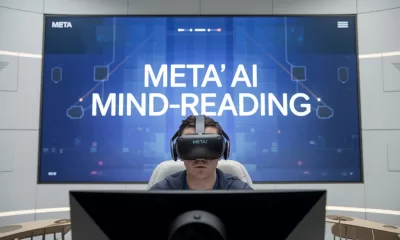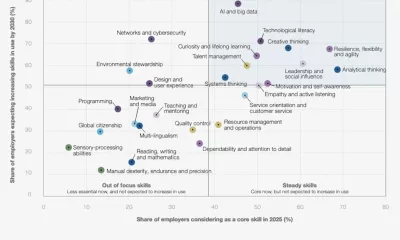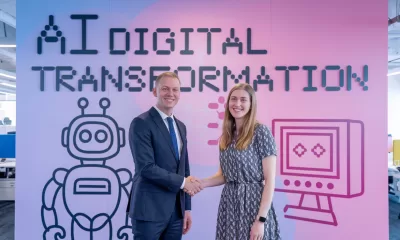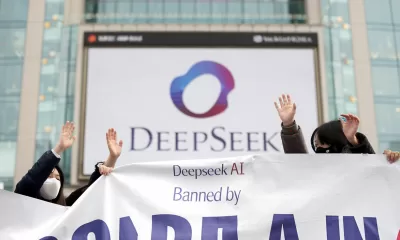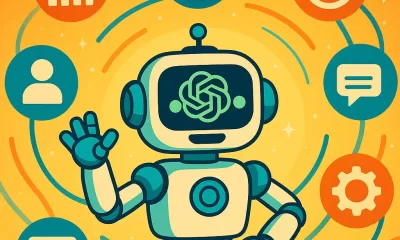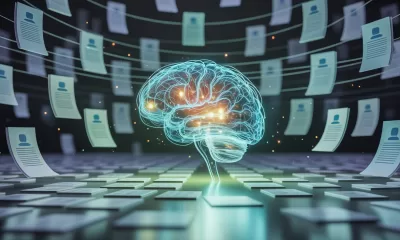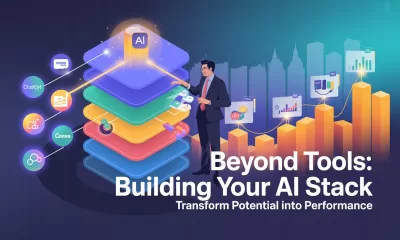Marketing
Adrian’s Arena: How AI is Reshaping Industries and Shaping Our Future
An AI Revolution is transforming industries, enhancing healthcare, marketing, and sustainability while ensuring data privacy and creating new jobs.
Published
8 months agoon

TL/DR
- AI is solving complex problems like flood forecasting and accelerating drug discovery, with Google’s AI system saving lives in India.
- AI is transforming healthcare, with studies showing it outperforms humans in diagnosing breast cancer.
- In sales and marketing, AI recommendation engines drive significant revenue, such as 35% of Amazon’s sales.
I recently had the opportunity to participate on a panel with some of the brightest minds in AI and data science in Asia. Having worked in the tech and marketing world for over 25 years across multiple continents, I’ve seen firsthand how AI is transforming industries, both big and small. From healthcare to marketing, AI’s impact is growing rapidly. Here’s my take on what’s happening and some of what’s coming next.
AI: The New Industrial Revolution
We’re in the midst of what feels like a new industrial revolution, led by AI. It’s driving progress in efficiency, accuracy, and innovation. Two sectors where AI is making big moves are healthcare and sales & marketing.
In healthcare, AI is already outperforming humans in key areas. A recent study showed that AI could diagnose breast cancer from mammograms more accurately than radiologists. AI is also speeding up drug discovery, creating personalised treatments, and even guiding robotic surgeries. Another example is IBM’s Watson Health, which uses AI to assist doctors in developing personalised treatment plans for cancer patients. The next decade promises even bigger breakthroughs—could we see more diseases cured or even visit AI-powered doctors?
On the business side, AI is transforming sales and marketing.
Take Amazon, for example—their AI recommendation engine now drives 35% of all their sales, according to McKinsey.
That’s massive. Personalised recommendations are just the beginning; soon, companies may be selling only what people truly need, reducing waste and optimising resources. Another major example is Netflix, which uses AI to recommend shows and films to users, tailoring suggestions based on viewing history. This kind of personalisation is driving massive engagement.
Responsible Use of AI: Getting It Right
With all the excitement around AI, it’s critical to make sure we’re using it responsibly. At SQREEM, for instance, we focus on leveraging AI without relying on cookies or personally identifiable information (PII). Instead, we analyse behavioural trends to create high-value audiences, which brands can target across most digital marketing channels through their tech stack of choice (e.g. DV360, theTradedesk, etc).
This allows SQREEM to help deliver relevant insights and high performing media campaigns while still respecting privacy.
And it highlights an important balance: using AI’s power while ensuring data privacy and accountability.
With growing concerns over data misuse, companies need to be upfront about how they handle information and make sure AI is used in a way that benefits everyone.
AI is Solving Big Problems in Unexpected Ways
One of the most exciting things about AI is how it’s solving complex problems in ways we hadn’t imagined.
For example, Google’s AI-powered flood forecasting system in India provides real-time warnings to millions, saving lives and protecting property. It’s an impressive example of AI being used to tackle climate-related challenges.
In drug discovery, AI-driven platforms such as BenevolentAI and Insilico Medicine have accelerated the development of new treatments.
During the COVID-19 pandemic, AI was used to identify potential drugs in record time, shaving years off traditional development timelines.
AI is also being applied to solve broader, more complex challenges. In logistics, companies are using AI to optimise route planning, fleet management, and supply chain operations. Autonomous vehicles and drones are already transforming how goods are delivered, reducing delivery times and costs.
In manufacturing, AI-driven predictive maintenance can anticipate equipment failures, cutting downtime and costs by as much as 30-50%, according to McKinsey.
AI Boosting Data Privacy and Security
Data privacy and security are growing concerns, and AI is stepping in to help. By automatically identifying and managing sensitive data, AI can help companies comply with regulations like GDPR and CCPA. In terms of security, AI’s ability to detect unusual patterns in real-time is a game-changer. It catches breaches before they can cause serious damage, offering companies a proactive approach to safeguarding their data.
AI is also being used to detect and prevent fraud in sectors like banking. AI-powered systems can identify unusual spending patterns and flag fraudulent transactions almost instantly. This combination of speed and precision is becoming crucial in today’s data-heavy world.
How Start-ups Can Leverage AI to Compete
For start-ups and small businesses, AI is a fantastic opportunity. I always tell businesses to view AI as an enabler, not a threat. The best part?
You don’t need millions of pounds to get started. Cloud-based AI services from AWS, Google Cloud, or Microsoft Azure allow companies to access powerful AI tools without hefty upfront costs.
To start, focus on personalising your customer experiences and optimising operations. AI analytics can help you better understand customer behaviour and create targeted marketing campaigns. Another example is AI’s role in customer service, where AI chatbots are handling routine enquiries, freeing up staff to tackle more complex queries. And remember, education is key—there are plenty of online resources to help you learn the basics.
Don’t be afraid to experiment with new ideas and tools; it’s all about getting started and iterating.
Breaking Down the Barriers to AI Adoption
Even with all its promise, AI still faces hurdles. The biggest barriers? Lack of skilled talent, high costs, and concerns about data privacy and security. To overcome the talent gap, we need more educational initiatives and partnerships between businesses and academia. Upskilling teams is essential if companies want to harness AI’s potential.
When it comes to privacy and security, we need robust regulatory frameworks and a clear approach to AI’s use.
Being upfront about how AI is used will help build trust, which is key to encouraging wider adoption.
AI and Humans: A Winning Combo
AI isn’t here to replace humans—it’s here to work with us. AI takes care of repetitive, data-heavy tasks, allowing humans to focus on creative problem-solving. Take customer service: AI chatbots handle routine queries, freeing up human agents for more complex issues. In fields like finance, AI systems are already being used to manage portfolios and assist with investment decisions.
According to the World Economic Forum, AI will create 97 million new jobs by 2025, while displacing 85 million.
While disruption is inevitable, the net gain shows how AI can be a tool for growth—if companies adopt AI strategies and train their teams effectively.
AI for Sustainability and ESG Reporting
AI’s potential for driving sustainability is massive.
For example, Google’s DeepMind used AI to reduce energy consumption in their data centres by 40%.
In agriculture, AI-driven precision farming is helping farmers use water, fertilisers, and pesticides more efficiently, which is essential for sustainability. AI systems can analyse soil conditions, weather forecasts, and crop health data to maximise yields while reducing environmental impact.
In terms of Environmental, Social, and Governance (ESG) reporting, AI is a game-changer. By automating data collection and analysis, AI ensures accuracy and compliance while providing real-time insights into a company’s sustainability efforts. This makes it easier for companies to hit their ESG targets and satisfy investors and customers.
In conclusion, AI and data science are transforming the world at an unprecedented pace.
Whether it’s healthcare, business, or tackling global challenges like climate change, AI offers incredible opportunities. But as we integrate AI into our lives and businesses, we must ensure accountability and foresight.
The future is bright, and by working together—AI and humans—we can shape a more efficient, sustainable, and innovative world.
Comment and Share
How do you think AI will shape the future of your industry? Share your thoughts, and let’s discuss the potential and challenges of AI integration. And don’t forget to subscribe for updates on AI and data science developments and to comment below!
You may also like:
- Adrian’s Arena: East Meets West – Contrasting AI Partnership Strategies for OpenAI
- AI and Asian Gen Z is A Slang-Filled Digital Dialogue
- Navigating the Privacy and Security Risks of AI and AGI in the Workplace
- Powering the AI Revolution: The Data Centre Boom in Southeast Asia
- Or find out more about Adrian Watkins by tapping here.
Author
-
Adrian is an AI, marketing, and technology strategist based in Asia, with over 25 years of experience in the region. Originally from the UK, he has worked with some of the world’s largest tech companies and successfully built and sold several tech businesses. Currently, Adrian leads commercial strategy and negotiations at one of ASEAN’s largest AI companies. Driven by a passion to empower startups and small businesses, he dedicates his spare time to helping them boost performance and efficiency by embracing AI tools. His expertise spans growth and strategy, sales and marketing, go-to-market strategy, AI integration, startup mentoring, and investments. View all posts
Discover more from AIinASIA
Subscribe to get the latest posts sent to your email.
You may like
-


If AI Kills the Open Web, What’s Next?
-


Unearthly Tech? AI’s Bizarre Chip Design Leaves Experts Flummoxed
-


How Did Meta’s AI Achieve 80% Mind-Reading Accuracy?
-


How to Prepare for AI’s Impact on Your Job by 2030
-


We (Sort Of) Missed the Mark with Digital Transformation
-


DeepSeek Dilemma: AI Ambitions Collide with South Korean Privacy Safeguards
Learning
Your Next Computer Will Be AI Powered Glasses: The Future of AI + XR Is Here (And It’s Wearable)
Discover how AI-powered smart glasses and immersive XR headsets are transforming everyday computing. Watch Google’s jaw-dropping TED demo featuring Android XR, Gemini AI, and the future of augmented intelligence
Published
1 month agoon
May 2, 2025By
AIinAsia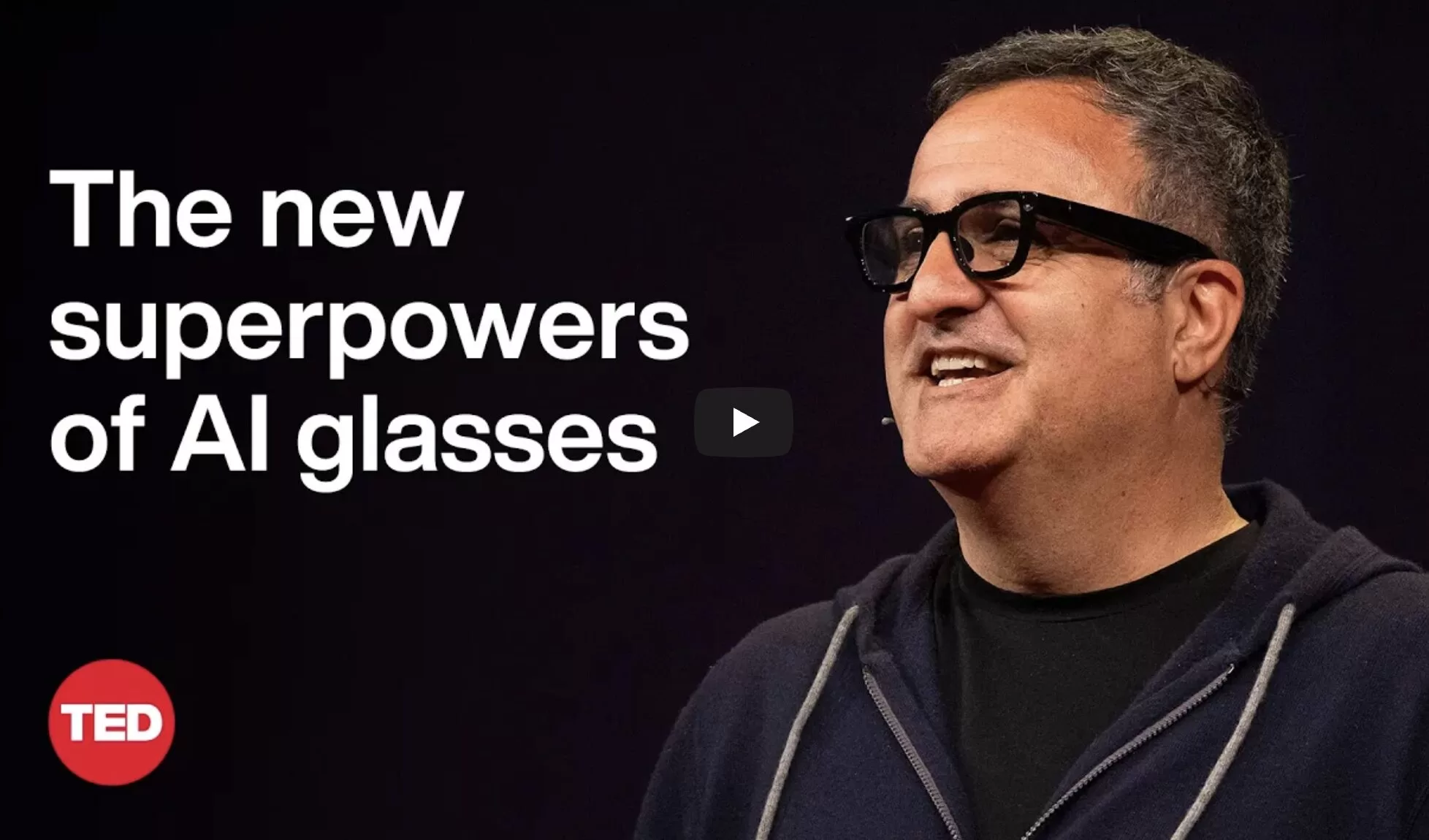
How AI-powered smart glasses and spatial computing are redefining the next phase of the computing revolution.
TL;DR:
Forget everything you thought you knew about virtual reality. The real breakthrough? Smart glasses that remember your world. Headsets that organise your life. An AI assistant that sees, understands, and acts — on your terms. In this jaw-dropping live demo from TED, Google’s Shahram Izadi and team unveil Android XR, the fusion of augmented reality and AI that turns everyday computing into a seamless, immersive, context-aware experience.
▶️ Watch the full mind-blowing demo at the end of this article. Trust us — this is the one to share.
Why This Video Matters
For decades, computing has revolved around screens, keyboards, and siloed software. This TED Talk marks a hard pivot from that legacy — unveiling what comes next:
- Lightweight smart glasses and XR headsets
- Real-time, multimodal AI assistants (powered by Gemini)
- A future where tech doesn’t just support you — it remembers for you, translates, navigates, and even teaches
It’s not just augmented reality. It’s augmented intelligence.
Key Takeaways From the Presentation
1. The Convergence Has Arrived
AI and XR are no longer developing in parallel — they’re merging. With Android XR, co-developed by Google and Samsung, we see a unified operating system designed for everything from smart glasses to immersive headsets. And yes, it’s conversational, multimodal, and wildly capable.
2. Contextual Memory: Your AI Remembers What You Forget
In a standout demo, Gemini — the AI assistant — remembers where a user left their hotel keycard or which book was on a shelf moments ago. No manual tagging. No verbal cues. Just seamless, visual memory. This has massive implications for productivity, accessibility, and everyday utility.
3. Language Barriers? Gone.
Live translation, real-time multilingual dialogue, and accent-matching voice output. Gemini doesn’t just translate signs — it speaks with natural fluency in your dialect. This opens up truly global communication, from travel to customer support.
4. From Interfaces to Interactions
Say goodbye to clicking through menus. Whether on a headset or glasses, users interact using voice, gaze, and gesture. You’re not navigating a UI — you’re having a conversation with your device, and it just gets it.
5. Education + Creativity Get a Boost
From farming in Stardew Valley to identifying snowboard tricks on the fly, the demos show how AI can become a tutor, a co-pilot, and even a narrator. Whether you’re exploring Cape Town or learning to grow parsnips, Gemini is both informative and entertaining.
Why This Matters for Asia
The fusion of XR and AI is particularly exciting in Asia, where mobile-first users demand intuitive, culturally fluent, and multilingual tech. With lightweight wearables and hyper-personal AI, we’re looking at:
- Inclusive education tools for remote learners
- Smarter workforce training across languages and contexts
- Digital companions that can serve diverse populations — from elders to Gen Z creators
As Google rolls out this tech via Android XR, the opportunities for Asian developers, brands, and educators are immense.
Watch It Now: The Full TED Talk
Title: This is the moment AI + XR changes everything
Speaker: Shahram Izadi, Director of AR/XR at Google
Event: TED 2024
Runtime: ~17 minutes of pure wow
Final Thought
What’s most striking isn’t the hardware — it’s the human experience. Gemini doesn’t feel like software. It feels like a colleague, a coach, a memory aid, a translator, and a co-creator all in one.
We’re not just augmenting our surroundings.
We’re augmenting ourselves.
—
👀 Over to You:
What excites (or concerns) you most about AI-powered XR and AI-powered smart glasses? Could this be the beginning of post-smartphone computing?
Drop your thoughts in the comments below!
You may also like:
- Will Meta’s New AR Glasses Replace Smartphones by 2027?
- Meta’s AI-powered Smart Shades with Ray-Ban
- Perplexity Assistant: The New AI Contender Taking on ChatGPT and Gemini
Author
Discover more from AIinASIA
Subscribe to get the latest posts sent to your email.
Marketing
Playbook: How to Use Ideogram.ai (no design skills required!)
Turn text into stunning visuals with Ideogram.ai. This no-jargon guide shows you how to create AI logos, posters, memes, and merch—even as a total beginner.
Published
1 month agoon
April 24, 2025By
AIinAsia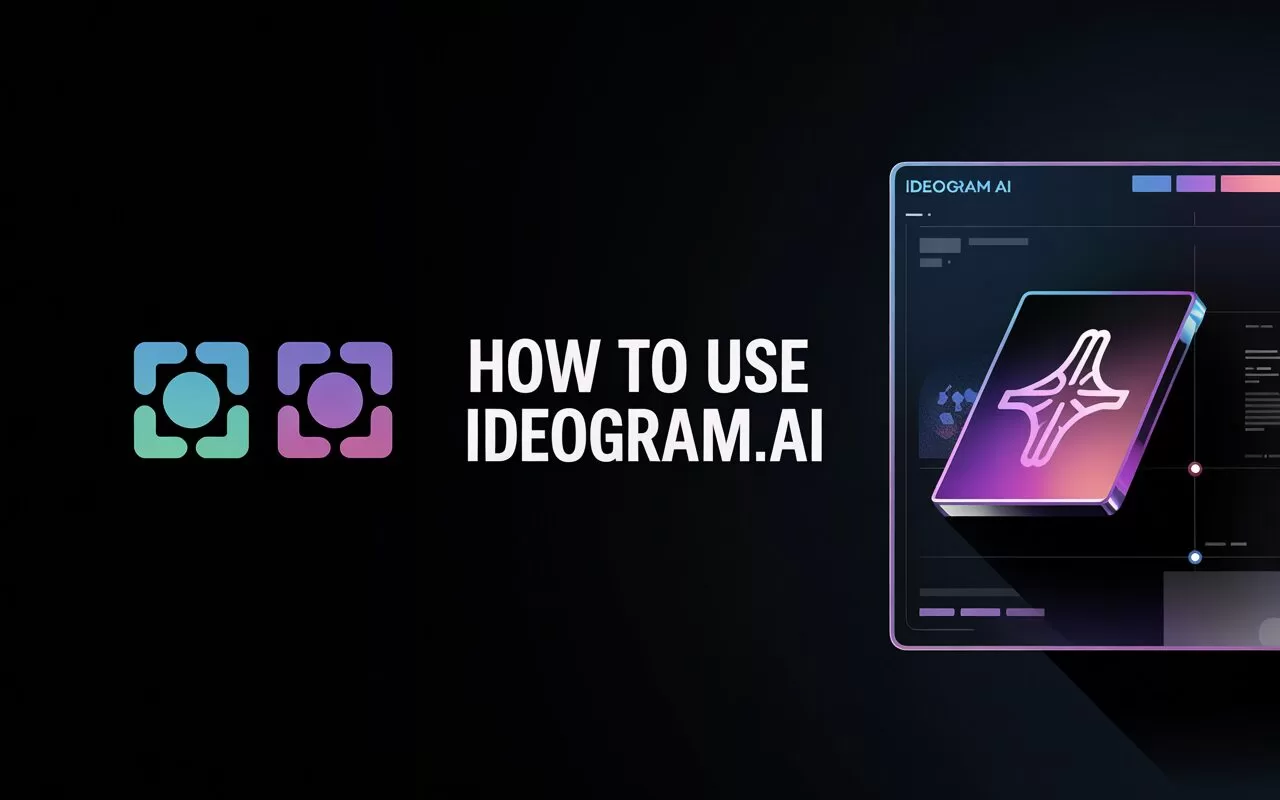
Part of our Prompt and Play series, this article brings AI image magic for anyone who’s ever wished they could turn words into posters, logos, merch, memes—and more.
Whether you’re a total beginner, a brand builder, a creator with too many ideas, or just AI-curious, this guide will help you get the best out of Ideogram.ai—one of the easiest and most fun tools to explore visual creativity through text prompts.
No jargon. No prior experience needed. Just ideas, a keyboard, and a pinch of prompt magic.
1. What is Ideogram.ai – and Why Should You Care?
Ideogram.ai is a free, browser-based tool that turns text prompts into striking images, with one major advantage: it’s actually good at rendering text. That means you can generate logos, signs, posters, and packaging mockups that don’t end up looking like alphabet soup.
You’ve probably seen other AI art tools struggle with spelling—Ideogram has made this its superpower.
What it’s great for:
- Logos and branding mockups
- Posters, merch and marketing visuals
- Social content and memes
- Lettering-based art (neon signs, graffiti, retro fonts, etc.)
The tool’s simple interface, community sharing features, and easy remixing make it one of the most user-friendly creative playgrounds out there—especially if you’re just getting started with AI-generated design.
2. Start Here: Your First 5-Minute Prompt Test Drive
Here’s a super-simple way to get your first result in under 5 minutes:
Try this prompt:
“Logo that says: COFFEE CLUB, in bold black letters, on a white background, minimalist design”
You’ll instantly get 4 images. If you like one, great—download it or remix it. If it’s not quite right, click “Remix” and adjust your words slightly.
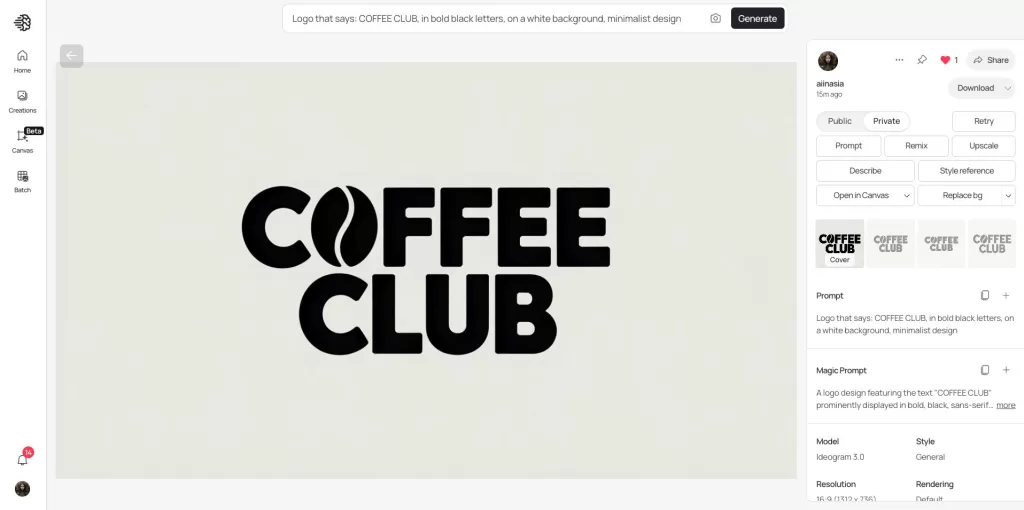
Quick win tips:
- Use “that says:” or “with the text:” for best results when adding words.
- Keep your first prompt clear and simple—no need to overcomplicate.
- If you’re not getting readable text, try rephrasing slightly or switching to a simpler style (e.g. “modern logo design” or “minimalist”).
3. Prompt Craft: The Secret Sauce to Better Images
Prompt Formula (use this as your go-to starting point):
[Subject or Object] with [Key Attribute or Message], in [Visual Style or Medium], featuring [Text or Colours], on [Background or Scene].
→ Then adjust based on the output.
Example:
“Festival poster that says: LUNAR VIBES 2025, colourful retro style, glowing neon lights, black background”
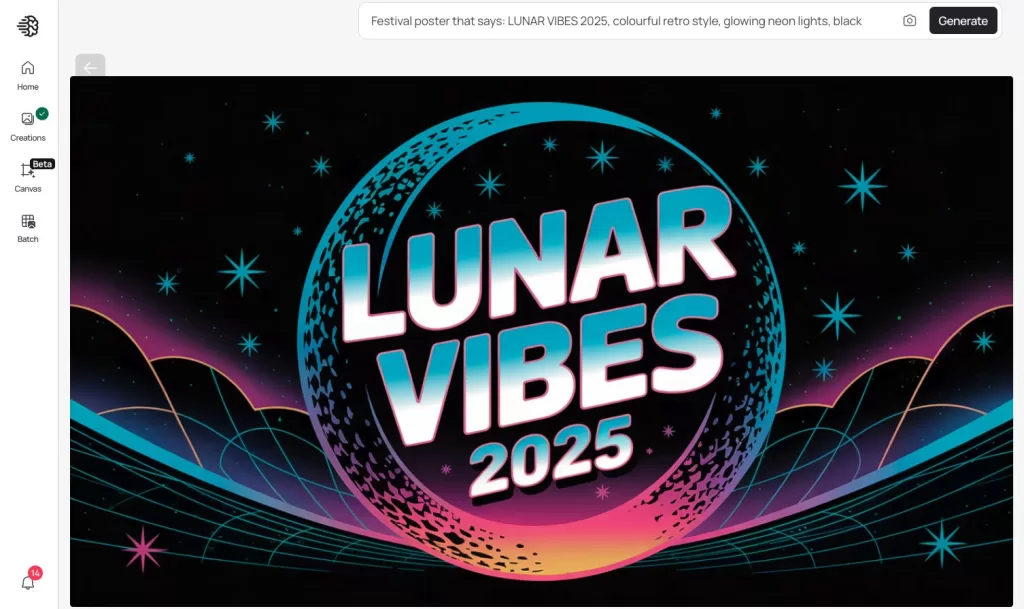
🔍 What to know:
- Text prompting is Ideogram’s strength, so be specific:
“Poster with the text: SALE NOW ON” works better than “Sale poster.” - You can give style guidance like “hand-drawn,” “graffiti,” “pixel art,” or “minimalist.”
- Weights and modifiers like
::are not required—but useful for advanced users.
(e.g. “Cyberpunk city::2, blue tone::1.5, background::0.5”)
❌ Common mistakes:
- Prompting like ChatGPT (“Create a logo for my business…”)—just say what you want!
- Overloading the prompt with too many styles or requests
- Forgetting to use “that says:” when including readable text
4. The Toolbench: Features You Should Actually Use
Let’s break down what matters on-screen:
🎛️ Style Presets
These buttons help nudge your image toward a certain vibe:
- Typography – Great for bold, clean logo text
- Poster Art – Ideal for stylised messaging (events, campaigns, activism)
- 3D Render – Good for packaging mockups
- Illustration / Painting / Pixel Art – Best for storytelling and creative play
🧪 Tip: Style buttons affect how your prompt is interpreted, so try toggling different ones with the same prompt.
🔄 Remix vs Variations
- Remix = Keeps your image but lets you rewrite or tweak the prompt to guide a new version
- Variations = Auto-generates 4 similar images with slight changes (useful if you’re almost there)
✏️ Editing an Existing Creation
Want to change the text, colours, or layout of something you made earlier?
Here’s how to do it:
- Open the image you want to adjust.
- Click “Remix” – this pulls in your original prompt.
- Change only the part you want to improve (e.g. “black background” → “yellow background”; “SALE NOW ON” → “LAST CHANCE!”).
- Click “Generate” to see your updated versions.
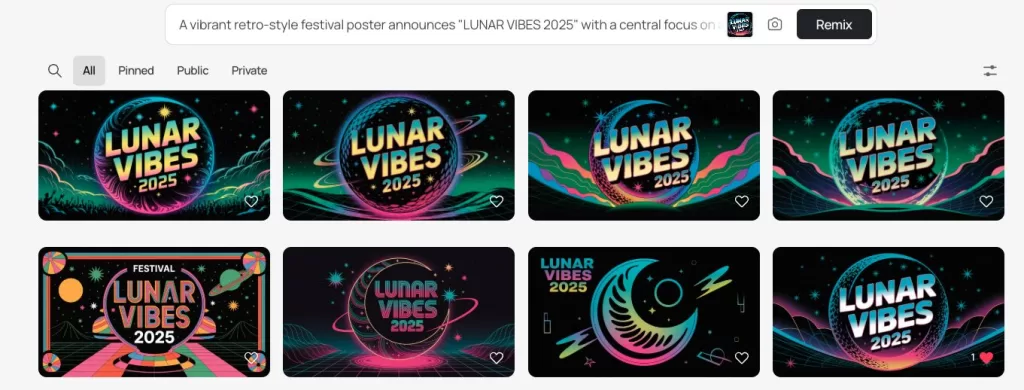
This is the fastest way to iterate on a design without starting from scratch. You can do this with your own images or images shared by others (if remixing is enabled).
👥 5. Power Users: How Marketers Can Get the Most Out of Ideogram
If you’re running campaigns, building content calendars, or just trying to stay ahead of your social media schedule—Ideogram is a shortcut to visual ideas that don’t need a designer (yet).
Here’s how marketers can make it work:
📌 What to use it for:
- Social media graphics with promo text
- Bold callouts for paid ads
- Poster-style teaser images for events or launches
- Typography-led Instagram posts
- Quick campaign mockups (try a few visual routes before briefing design)
🧠 Prompt Ideas for Marketers:
“Poster that says: 50% OFF THIS WEEKEND ONLY, minimalist black text, red background”

As you can see here, even Ideogram isn’t infallible when it comes to text — in the first image, WEEKKEND is spelled incorrectly (so you could use the ‘Remix’ feature above to rerun this)/
✅ Bonus tip:
Use Ideogram for MVP branding—logos, taglines, colour combos—for new campaigns, sub-brands or event assets. You can test 5 looks in 5 minutes and get stakeholder feedback before the designer even opens Figma.
👥 6. Power Users Continued: Creators, SMBs, Educators
🎨 For Creators & Designers
Whether you’re a digital artist, YouTuber, podcaster, or print-on-demand dabbler, Ideogram is a playground for creative iteration.
Use it for:
- Album covers, podcast art, YouTube thumbnails
- T-shirt mockups or sticker designs
- Personal logos, avatars, banners
- Aesthetic moodboards or typography-led artwork
Prompt ideas:
“T-shirt design that says: Trust the Process, 70s retro style, bold colours”
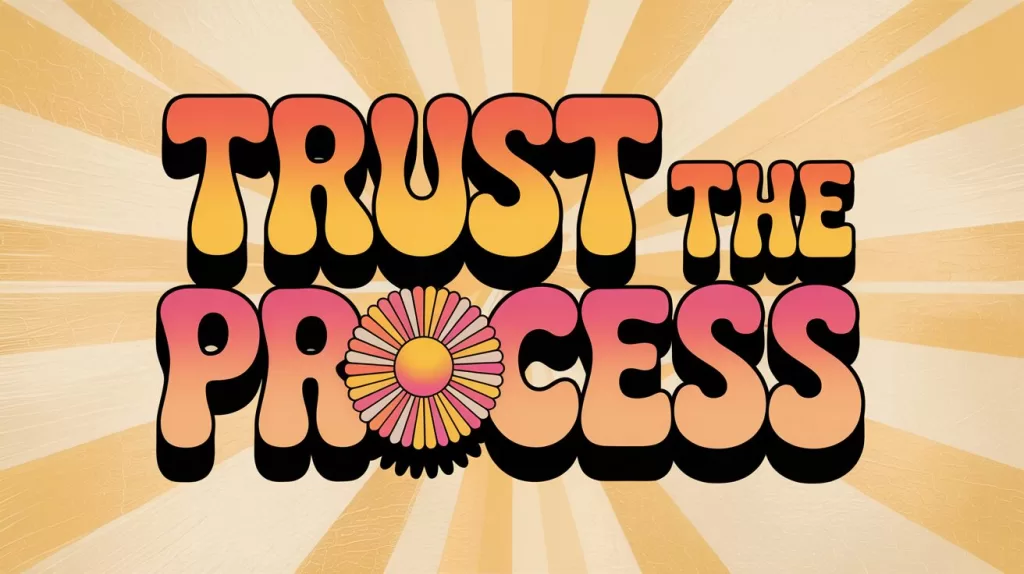
“Podcast cover art for: The Digital Drift, glitchcore style, purple and black, clean typography”
💡 Tip: Try variations to explore visual “takes” on a concept. It’s like getting multiple drafts for free.
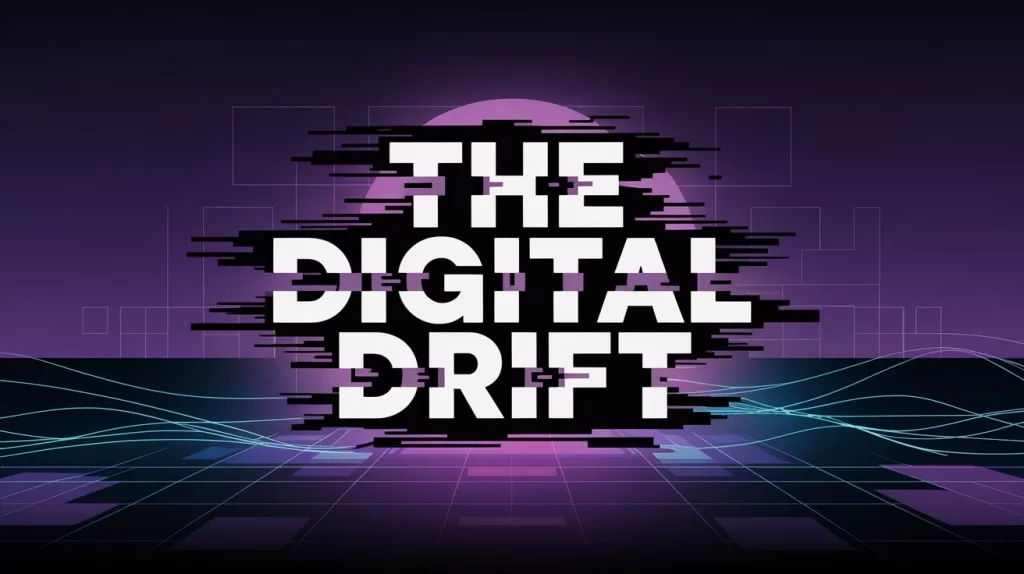
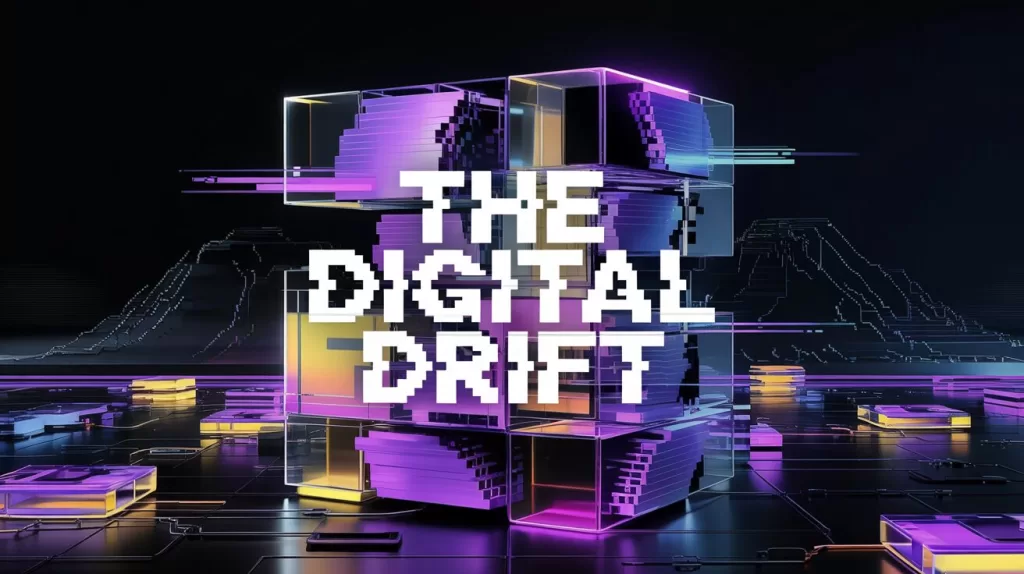
🛒 For Small Business Owners & Entrepreneurs
You don’t need to be a designer to make your brand look like one. Ideogram gives you fast, low-effort visuals to test and showcase your business.
Use it for:
- Logos, flyers, business cards, promo posts
- Etsy or Shopee store banners
- Popup event posters or in-store signage
- Social content with callouts or quotes
Prompt ideas:
“Logo for: Bean & Co Coffee Bar, minimalist black on white, modern serif font”

“Flyer that says: Pop-up This Saturday, 11am–6pm, local art and food, vibrant colours, community vibe”

Or use together:
“Logo for: Bean & Co Coffee Bar, minimalist black on white, modern serif font” “Flyer that says: Pop-up This Saturday, 11am–6pm, local art and food, vibrant colours, community vibe”

📦 Tip: Pair with Canva or a print service to turn your images into usable templates or assets.
📚 For Educators & Students
Great for classroom projects, quick visual storytelling, or just making your slides way more interesting.
Use it for:
- Posters, infographics, classroom signage
- Book or film “cover” assignments
- Slide visuals or explainer imagery
- AI storytelling or creative writing pair-ups
Prompt ideas:
“Poster that says: Save the Rainforest, student project, bright and bold, friendly cartoon style”

“Visual story: The Robot Who Wanted to Be a Painter, digital illustration, children’s book style”
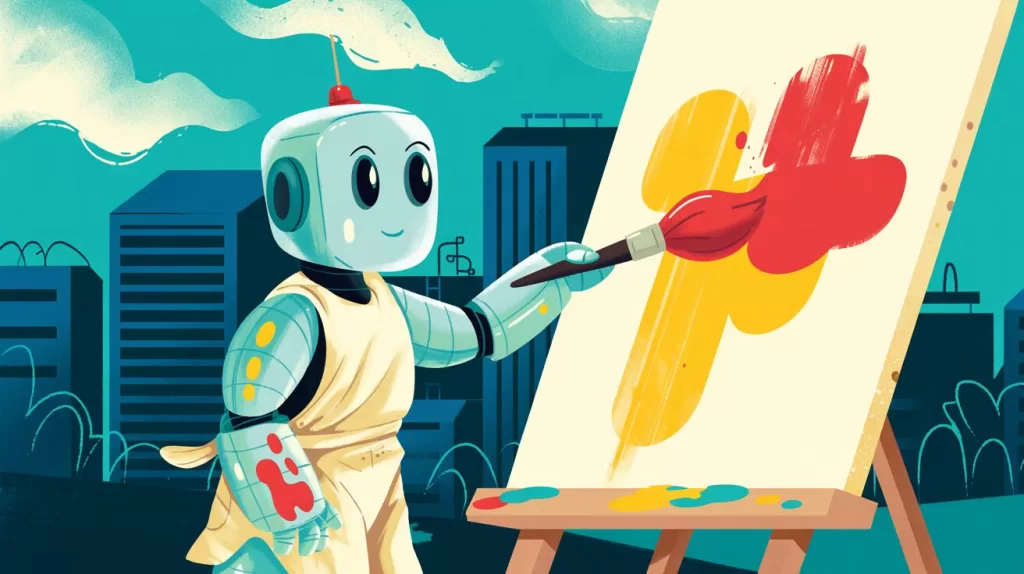
📖 Tip: Students love remixing each other’s prompts—great for creative iteration in a classroom setting.
🧪 7. Experiment Lab: Fun Prompt Challenges to Try
Kickstart your creativity with these mini challenges:
🧢 “Design a t-shirt for your dog’s startup”
→ Prompt: “Logo that says: BarkTech, playful dog tech startup, futuristic blue and green”
🎬 “Make a movie poster for a film that doesn’t exist”
→ Prompt: “Movie poster for: Moonlight Over Osaka, noir romance, neon style, rain background”
🎤 “Create an album cover based on your mood right now”
→ Prompt: “Album cover for: Calm Chaos, ambient music, blue waves and soft light”
💡 These can be great warm-ups before serious projects—or just a way to explore visual directions without pressure.
🧙♂️ 8. Pro Tips & Prompt Magic
Here’s where things get spicy. A few insider moves to level up your Ideogram game:
🔤 Better Text Results
- Always use “that says:” or “with the text:” to guide readable copy
- Avoid long sentences—short phrases and bold text work best
- Use quotes sparingly (e.g.
that says: “Be Kind”) for cleaner rendering
⚖️ Prompt Balance
- Keep a clear subject and mood—don’t overload with style mashups
- Use fewer modifiers to control clutter
(“clean” > “vintage + neon + graffiti + smoke + metallic”)
🙅 Negative Prompts That Work
Add to your prompt:
- “no blur”
- “no watermark”
- “no extra text”
- “plain background”
♻️ Remix vs Starting Over
- Use Remix to refine one idea quickly
- Start fresh if your original prompt is too muddled—simpler is often better
🗃️ Build Your Prompt Library
Keep a notes doc or Notion page of prompts you like.
Label them: “Event Poster,” “Logo Style 1,” “Inspirational Quote Card,” etc.
Reuse and tweak them like ingredients in your own creative kitchen.
💾 9. Save, Share & Remix Like a Pro
✅ Saving Images
Click the image, then use the download button for the highest resolution.
Want it background-free? Use a background remover (e.g. remove.bg) for logos or stickers.
🔄 Remixing Others
Browse the Explore tab to see what others are making.
Click Remix on anything that inspires you—it brings in the prompt, so you can tweak and build on it.
✨ Always credit or shout out creators if you use their prompt as a starting point.
📁 Build a Brand Set
Make 4–5 versions of your logo in different styles (e.g. minimalist, vintage, bold).
Use them across socials, packaging, site banners.
This works especially well for side hustlers or new ventures.
⚖️ 10. Where It Shines vs Where It Struggles
| Strengths | Watch-outs |
|---|---|
| Amazing at text in image | Not built for photorealism |
| Fast and user-friendly | Complex scenes can get cluttered |
| Great for branding, posters, signage | People or detailed realism? Use Midjourney instead |
| Easy Remix and Community culture | Limited control vs pro tools like Photoshop |
🚀 Final Thought: Why Ideogram Deserves a Spot in Your AI Toolkit
You don’t need to be a designer to look like one—and Ideogram makes that possible. For anyone who’s ever opened Canva and wished they had a logo, a flyer idea, or just a vibe to work with, this tool is an instant creativity unlock.
It won’t replace a professional design team—but it will help you ideate faster, iterate better, and bring your ideas to life in minutes.
🎁 Bonus: 10 Ready-to-Use Prompts to Copy & Tweak
Want to hit the ground running? Here are 10 plug-and-play prompts you can paste into Ideogram right now. Tweak the text, colours or style to match your brand or project.
🔖 Logos & Branding
Logo that says: [Your Brand Name], modern minimalist style, black text on white background
Logo that says: [Your Cafe Name], handwritten font, earthy colours, clean layout
🛍️ Marketing & Promotions
Poster that says: SALE ENDS TONIGHT, bold red text on white background, simple design
Instagram post for new collection: [Your Product], modern style, pastel colours, clean layout
👕 Merch & Creators
T-shirt design that says: Stay Curious, 90s aesthetic, bold colours, graphic style
Album cover for: [Band or Vibe], dark glitchcore aesthetic, neon blue and purple
🎓 Educators & Events
Classroom poster that says: Kindness Matters, playful cartoon style, rainbow colours
Flyer that says: Open House This Friday, student event, friendly bold text, bright layout
Advertisement
💡 Fun & Experiments
Meme that says: When the Wi-Fi Drops One Bar, simple comic style, white background
Festival poster for: Cloudwave 3025, synthwave colours, cyberpunk vibe, black background
You can save your favourites, remix others, or create a swipe file of go-to prompts for every mood, season, or campaign.
✌️ That’s a Wrap – Go Play, Remix, and Create
Ideogram.ai isn’t just a tool—it’s a creative playground for anyone with a keyboard and an idea. Whether you’re building a brand, making memes, designing merch, or just having fun, it gives you a low-barrier, high-reward way to bring your words to life.
And the best part? You don’t need to be a designer. Just someone willing to play.
See you in the prompt bar. 🎨
What Do YOU Think?
Share your own personal tips and experiences below. Which prompt worked best for you?
This article is part of our Prompt and Play series

You may also like:
- 10 AI Prompts to Turn Your Pet Photos Into Phone Wallpapers (Plus Freebies!)
- Top AI Image Generators of 2024 and 2025
- Tap here to visit Ideogram.ai
Author
Discover more from AIinASIA
Subscribe to get the latest posts sent to your email.
Marketing
Will AI Kill Your Marketing Job by 2030?
AI is set to eliminate two-thirds of marketing agency jobs by 2030. Which roles are at risk and how marketers can thrive amid disruption?
Published
2 months agoon
April 4, 2025By
AIinAsia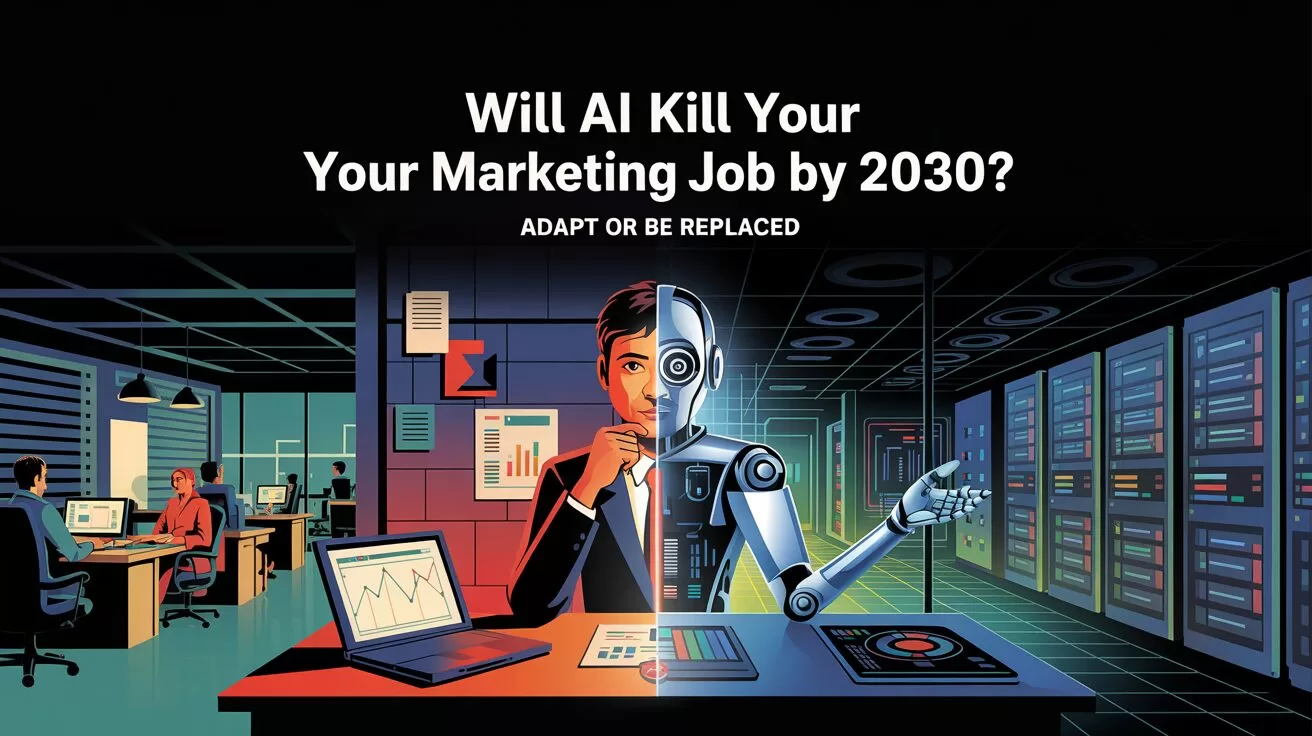
TL;DR – What You Need to Know in 30 Seconds
- AI Revolution: Over two-thirds of marketing agency roles will disappear by 2030, replaced by AI.
- Jobs at Risk: Copywriters, designers, data analysts, and social media managers face immediate disruption.
- Adapt or Die: Marketers must become strategic visionaries and partner with AI, or risk becoming obsolete.
AI and the End of Marketing Professions: Will Your Job Survive the AI Revolution?
We live in a moment Jeremy Rifkin vividly foresaw nearly 30 years ago in The End of Work: technology is not only reshaping jobs but eliminating entire categories. Marketing, traditionally seen as a safe haven for human creativity and analytical intuition, is now being fundamentally disrupted by artificial intelligence (AI). But how dramatic is this shift?
A Marketing Veteran’s Prediction: 2/3 of Jobs Gone by 2030?!
Having worn almost every hat in marketing—from award-winning creative designer, analyst, project manager to CTO—I have a unique perspective on these shifts. By 2030, I predict that more than two-thirds of marketing agency roles will become redundant, radically reshaped by the relentless efficiency of AI. Before you panic, though, let’s clarify something: marketing isn’t dying; it’s evolving.
This is not a doomsday prophecy—it’s a call to action.
Technological Prophecies Come True
Jeremy Rifkin warned us decades ago that automation would first hit repetitive tasks in manufacturing, administration, and services. Similarly, Alvin Toffler’s The Third Wave foresaw a future dominated by information technology disrupting traditional roles.
Today, marketing is riding this “third wave,” with tools like ChatGPT, DALL-E, and GitHub Copilot taking over tasks once believed uniquely human.
Which Marketing Roles Will AI Replace Next?
Here’s a breakdown of marketing professions facing immediate AI-driven disruption:
1. Basic Copywriters
- Why? AI effortlessly churns out slogans, product descriptions, and social posts at lightning speed.
- Example: “Write a catchy slogan for running shoes”—seconds later, AI delivers.
- Insight: Nicholas Carr’s The Shallows argues technology thrives where mediocrity suffices.
2. HTML Designers
- Why? Platforms like Wix and Squarespace empower non-technical users to create visually appealing websites with zero coding.
- Example: Input a few parameters, and AI delivers a polished landing page instantly.
3. Routine Marketing Programmers
- Why? GitHub Copilot and similar tools rapidly generate scripts, eliminating routine coding.
- Example: AI writes a tracking script in minutes that previously took hours.
4. Operational Social Media Managers
- Why? Buffer, Sprout Social, and other tools automate content scheduling, performance analysis, and even post-generation.
- Example: AI optimises posting times and auto-generates captions with minimal human input.
5. Entry-Level Data Analysts
- Why? Intelligent analytics tools (like Google Analytics with AI integration) automate data interpretation and reporting.
- Example: AI produces campaign performance reports and actionable insights without human prompting.
6. Basic Graphic Designers
- Why? Canva and AI image generators (e.g., DALL-E) democratise design capabilities, removing dependence on Photoshop skills.
- Example: Type “summer Instagram ad,” and AI immediately crafts visually appealing ads.
7. PR Assistants
- Why? AI-powered tools automate press releases, manage contact lists, and analyse media coverage without human assistants.
- Example: Meltwater identifies journalists and ChatGPT crafts press releases effortlessly.
8. Media Planners & Experts
- Why? Brandwatch and similar platforms analyse real-time media data to automate strategic media buying.
- Example: AI suggests budget allocation across channels in seconds, outpacing human planners.
9. Influencer Campaign Managers
- Why? AI identifies influencers, analyses their audience relevance, and recommends engagement strategies autonomously.
- Example: Tools like Influencer Marketing Hub streamline influencer discovery and campaign management entirely.
Is Any Marketing Job Safe from AI?
Despite this disruption, there are areas AI currently struggles to penetrate fully: Creative Directors and Illustrators. Kevin Kelly, author of The Inevitable, emphasises that human empathy, nuanced storytelling, and visionary ideas remain beyond AI’s grasp—at least for now.
Yet, even in these creative roles, AI increasingly acts as a powerful assistant, generating preliminary concepts for human refinement. So, while creative leadership roles appear safe today, the line is rapidly blurring.
Embracing AI: From Threat to Ally
As someone who’s navigated every corner of marketing—from the operational trenches to strategic leadership—I view AI as a double-edged sword: it demolishes traditional roles yet creates powerful new opportunities. Rifkin himself argued in The Zero Marginal Cost Society that technology drastically reduces operational costs, driving unparalleled efficiency.
The key: Marketers must see AI as a partner, not a competitor. Those who embrace AI strategically will survive and thrive.
Conclusion: Not the End, But a Radical Reinvention
Marketing isn’t ending—it’s transforming. While roles like basic copywriters, graphic designers, media planners, and PR assistants rapidly become obsolete, a new generation of strategic visionaries will rise.
As Alvin Toffler eloquently put it, “The future is not something that awaits us, but something we create.” For marketers, this means shifting from execution to strategic thinking, turning AI from a threat into our most valuable collaborator.
The question is: Is your marketing job destined for extinction by 2030, or can AI turn you into a marketing visionary?
Share your stories and opinions in the comments section—we’d love to hear from you.
You may also like:
- Forget the panic: AI Isn’t Here to Replace Us—It’s Here to Elevate Our Roles
- The AI Shift: Coping with AI Job Transformation in Asia
- The Mind-Blowing Future of AI: Ray Kurzweil’s Predictions for 2050
- Embrace the evolution now by finding the latest, best free online course for learning marketing with the Marketing AI Institute by tapping here.
Author
Discover more from AIinASIA
Subscribe to get the latest posts sent to your email.

Upgrade Your ChatGPT Game With These 5 Prompts Tips

If AI Kills the Open Web, What’s Next?

Build Your Own Custom GPT in Under 30 Minutes – Step-by-Step Beginner’s Guide
Trending
-

 Life3 weeks ago
Life3 weeks ago7 Mind-Blowing New ChatGPT Use Cases in 2025
-

 Learning2 weeks ago
Learning2 weeks agoHow to Use the “Create an Action” Feature in Custom GPTs
-

 Business3 weeks ago
Business3 weeks agoAI Just Killed 8 Jobs… But Created 15 New Ones Paying £100k+
-

 Tools3 weeks ago
Tools3 weeks agoEdit AI Images on the Go with Gemini’s New Update
-

 Learning6 days ago
Learning6 days agoBuild Your Own Custom GPT in Under 30 Minutes – Step-by-Step Beginner’s Guide
-

 Learning2 weeks ago
Learning2 weeks agoHow to Upload Knowledge into Your Custom GPT
-

 Business1 week ago
Business1 week agoAdrian’s Arena: Stop Collecting AI Tools and Start Building a Stack
-

 Life2 weeks ago
Life2 weeks agoAdrian’s Arena: Will AI Get You Fired? 9 Mistakes That Could Cost You Everything




